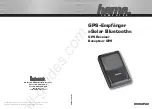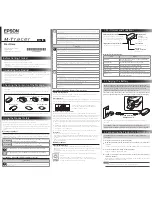
NEO-5
-
Hardware
Integration
Manual
Preliminary
Design-In
GPS.G5-MS5-08003-A2
u-blox
proprietary
Page 19
your position is our focus
2.7 Layout
This
section
provides
important
information
for
designing
a
reliable
and
sensitive
GPS/GALILEO
system.
GPS
signals
at
the
surface
of
the
Earth
are
about
15dB
below
the
thermal
noise
floor.
Signal
loss
at
the
antenna
and
the
RF
connection
must
be
minimized
as
much
as
possible.
When
defining
a
GPS
receiver
layout,
the
placement
of
the
antenna
with
respect
to
the
receiver,
as
well
as
grounding,
shielding
and
jamming
from
other
digital
devices
are
crucial
issues
and
need
to
be
considered
very
carefully.
2.7.1 Footprint
12.2
mm
[480.3
mil]
1
6
.0
m
m
[6
3
0
m
il]
1.0
mm
[39.3
mil]
0.8
mm[31.5
mil]
0.8
mm
[31.5
mil]
3.0
mm
[118.1
mil]
1.0
mm
[39.3
mil]
1.1
mm
[43.3
mil]
Figure 8: Recommended footprint
2.7.2 Paste
Mask
shows
the
recommended
positioning
of
the
Paste
Mask,
the
Copper
and
Solder
masks,
as
well
as
the
step
stencil.
These
are
recommendations
only
and
not
specifications.
Note
that
the
Copper
and
Solder
masks
have
the
same
size
and
position.
To
improve
the
wetting
of
the
half
vias,
reduce
the
amount
of
solder
paste
under
the
module
and
increase
the
volume
outside
of
the
module
by
defining
the
dimensions
of
the
paste
mask
to
form
a
T-shape
(or
equivalent)
extending
beyond
the
Copper
mask
as
shown
in
In
addition,
use
a
step
stencil
covering
the
entire
area
of
the
module
and
beyond
the
paste
mask
to
increase
the
volume
of
solder
paste
here.
The
solder
paste
at
the
step
stencil
should
have
a
total
thickness
of
175
to
200
μ
m.
If
a
step
stencil
is
not
used
it
is
still
advisable
to
increase
the
volume
of
solder
paste
outside
the
module
to
attain
the
desired
level
of
wetting.
This
must
be
done
by
modifying
the
shape
of
the
paste
mask
outside
the
module,
to
allow
for
the
increased
volume
of
solder
paste.














































